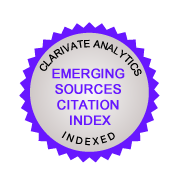Abstract
Long-standing debates over historiographical approaches to the Axial Age have distracted the history of philosophy from its own disciplined inquiry into the breadth and depth of ancient thought beyond the Greeks. The philosopher Karl Jaspers offered a vista for seeing commonalities among ancient innovations and discerning continuities along history to modern times. That dual agenda divided Axial historiography with the question of whether axiality reflects creativities of ancient systems or have modern reflections created images of axiality. A singular chronology for humanity encourages a mode of philosophical history open to providential designs, epochal turns, spiritual evolutions, psychological leaps, or cognitive revolutions. History of philosophy and religion, with the advice of theology and social history herein solicited, can reformulate a stricter and sounder historiography more congenial to a broad scope for ancient philosophy. In particular, arrivals of axiality would appear in distinct stages at different times across separate regions as a matter of responding creatively to changing socio-historical conditions. Twelve candidates for Axial phases across Eurasia during the early Iron Age are accordingly proposed, which include oft-mentioned philosophies and religions as well as overlooked systems that were no less Axial.
Recommended Citation
SHOOK, John R.
(2025)
DOI: https://doi.org/10.31979/2151-6014(2025).160210
"A Place for Ancient Philosophy in Axial Age Historiography,"
Comparative Philosophy: Vol. 16:
Iss.
2, Article 10.
Available at:
https://scholarworks.sjsu.edu/comparativephilosophy/vol16/iss2/10
Included in
Comparative Philosophy Commons, History of Philosophy Commons, History of Religion Commons, History of Religions of Eastern Origins Commons, History of Religions of Western Origin Commons, Intellectual History Commons


